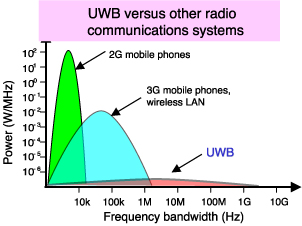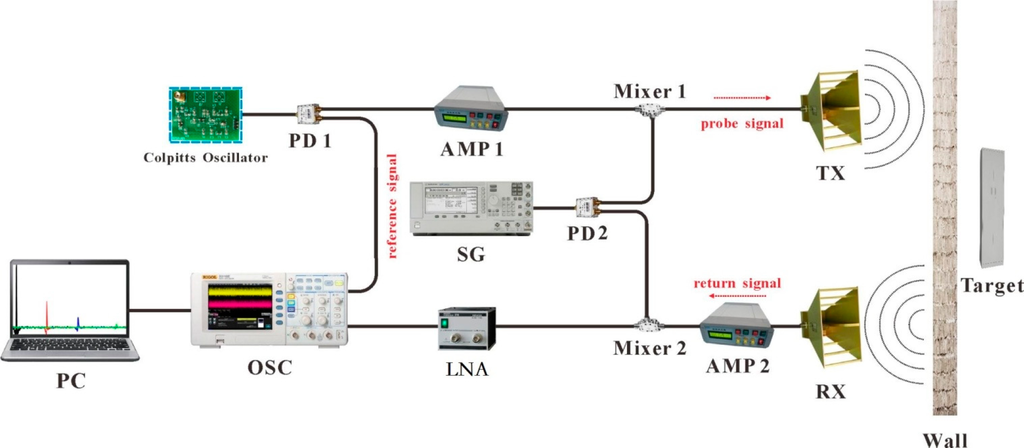 |
| Did the NSA help kill UWB? - I, Cringely |
Features
- Presents the latest developments in the theory and applications of high resolution materials-penetrating sensor systems
- Explains the problems and solutions for developing new techniques and applications
- Addresses specific technology areas that give the reader practical information regarding applications and future benefits
- Contains the contributions of an international team of experts
- Discusses hot topics such as materials-penetrating radar techniques for small object detection and imaging, biolocation using holographic techniques, nondestructive testing methods, electronic warfare principles, and through-the-wall radar
Summary
This book presents the latest theory, developments, and applications related to high resolutionmaterials-penetrating sensor systems. An international team of expert researchers explains the problems and solutions for developing new techniques and applications. Subject areas include ultrawideband (UWB) signals propagation and scattering, materials-penetrating radar techniques for small object detection and imaging, biolocation using holographic techniques, tomography, medical applications, nondestructive testing methods, electronic warfare principles, through-the-wall radar
propagation effects, and target identification through measuring the target return signal spectrum changes.
xxxxxxxxxxxxxxx
UC San Diego /All Collec
Related/Background:
M. G. M. Hussain, "Ultra-wideband impulse radar-an overview of the principles," in IEEE Aerospace and Electronic Systems Magazine, vol. 13, no. 9, pp. 9-14, Sep 1998.doi: 10.1109/62.715515
Abstract: Over the past decade, extensive research work has been carried out to develop the ultra-wideband (UWB) technology for radar applications, and to resolve the practical challenges in implementing an efficient UWB radar system. In this paper, we present an overview of the basic principles of UWB impulse radar. The focus is on the principles of UWB signal generation, impulse radiation, waveform design, pulse compression, range-velocity resolution (ambiguity function), array beamforming, and radar-target signature
keywords: {pulse compression;radar;radar signal processing;radar target recognition;radar theory;UWB impulse radar;UWB signal generation;array beamforming;impulse radiation;pulse compression;radar applications;radar-target signature;range-velocity resolution;ultra-wideband impulse radar;waveform design;Array signal processing;Bandwidth;Electromagnetic radiation;Radar applications;Radar detection;Signal design;Signal generators;Signal resolution;Ultra wideband radar;Ultra wideband technology},
URL: http://ieeexplore.ieee.org/stamp/stamp.jsp?tp=&arnumber=715515&isnumber=15490
M. Anabuki et al., "High-resolution imaging and identification of multiple pedestrians using UWB Doppler radar interferometry and adaptive array processing," 2016 International Symposium on Antennas and Propagation (ISAP), Okinawa, Japan, 2016, pp. 316-317.
Abstract: Imaging of the human body using ultrawideband (UWB) radar for security applications has numerous advantages over other approaches. Recently, low-cost radar systems have been intensively studied for this purpose, employing Doppler interferometry technology to image a single human target. The technique, however, has limitations when there is more than one target person in the scene. To resolve this problem, we combined the Doppler interferometry algorithm with adaptive array processing. This approach enables the separation of multiple human targets with the help of a clustering algorithm. We applied the proposed method to simulated data and demonstrated that it could separate multiple human echoes with a root-mean-square error of 4.3 cm, which makes the accuracy more than three times higher than that of the conventional method.
keywords: {Antenna arrays;Clustering algorithms;Doppler effect;Doppler radar;Imaging;Interferometry;Radar imaging;Doppler radar;adaptive signal processing;high-resolution imaging;ultra wideband radar},
URL: http://ieeexplore.ieee.org/stamp/stamp.jsp?tp=&arnumber=7821361&isnumber=7821043
M. G. M. Hussain, "Principles of MIMO radar based on ultrawideband throb signals," 2016 International Conference on Electromagnetics in Advanced Applications (ICEAA), Cairns, QLD, 2016, pp. 878-881.
doi: 10.1109/ICEAA.2016.7731542
Abstract: This paper describes the principles of multiple-input-multiple-output (MIMO) radar operating with a set of quasi-orthogonal ultrawideband (UWB) throb signals. MIMO radar ambiguity function (AF) is derived for the UWB-throb signals, and used to generate plots of delay-Doppler resolution function, delay-angle resolution function, Doppler-angle resolution function, and MIMO power beam-pattern for system and signal design parameters. The MIMO ambiguity function is an important tool that facilitates the process of signal design and diversity for achieving improved radar performance in terms of target detection, high-resolution imaging, target identification, and clutter suppression.
keywords: {Doppler radar;MIMO radar;delays;image resolution;interference suppression;object detection;radar clutter;radar target recognition;ultra wideband radar;MIMO power beam pattern;MIMO radar ambiguity function;UWB throb signals;clutter suppression;delay Doppler resolution function;delay angle resolution function;high resolution imaging;multiple-input-multiple-output radar;quasiorthogonal ultrawideband throb signals;target detection;target identification;Doppler effect;MIMO;MIMO radar;Radar imaging;Sensors;Signal resolution},
URL: http://ieeexplore.ieee.org/stamp/stamp.jsp?tp=&arnumber=7731542&isnumber=7731371
M. J. Hines, A. Piers, K. Du, B. Gonzalez-Valdes, J. Á. Martínez-Lorenzo and C. M. Rappaport, "Localization of anti-personnel landmines using multi-bistatic ground-coupled ground penetrating radar," 2014 USNC-URSI Radio Science Meeting (Joint with AP-S Symposium), Memphis, TN, 2014, pp. 241-241.
doi: 10.1109/USNC-URSI.2014.6955624
Abstract: Summary form only given. Ground-penetrating radar is a mature technology which has a promising application in humanitarian demining. The technology is fast, inexpensive, and capable of detecting both metallic and non-metallic target casings. However, the efficacy of conventional air-coupled GPR has been limited by the rough air-soil interface, below which landmines are typically buried. Much of the recent literature focuses on advanced signal processing techniques in an attempt to remove the effects of the rough surface. Conversely, this work proposes the use of ground-contact antennas, which greatly improves signal penetration and reduces the rough ground clutter, thereby simplifying data analysis. Achieving contact between the surface and antennas can be done by integrating the antennas onto the feet of a non-articulated walking robotic platform. Finally, rather than imaging the subsurface, this localization method implements a robust geometric analysis to detect and localize a target with a minimal number of GPR scans. By using fewer scans and simpler data processing techniques, this method is capable of increasing the surveying speed of traditional GPR methods. Experimental data is collected using an ultra-wideband radar from Time Domain (Huntsville, AL, USA), which has a bandwidth of 3.1 to 5.3GHz. The antennas are circularly polarized compact spiral antennas, which operate from 2GHz to 6GHz. These antennas were designed and fabricated for this application, and the diameter of only 2cm achieves complete contact with the ground for each GPR scan. Additionally, the polarization and directivity of the antennas minimizes the direct signal, and therefore simplifies the identification of target reflections. The time-of-flight is determined by the maximum correlation between the reflection and a reference signal. Scans which satisfy both an amplitude and correlation threshold are analyzed with a localization algorithm, which utilizes time-difference of arrivals to ge- metrically determine the target location. A minimum of four unique bistatic GPR scans are necessary to evaluate for the target's position in three-space in soil with unknown permittivity, and an increased number of GPR scans improves the accuracy and reliability of the results. Using the proposed localization method, metallic cylindrical targets, 4cm in height and 4cm in radius buried in dry sand at depths varying between 5 and 15cm, were successfully located. Although this method has not yet been evaluated experimentally for non-metallic targets, previous computational work shows evidence that this method can be viable for plastic mine targets as well. Furthermore, theoretical simulations have demonstrated acceptable localization results for dispersive and wet soils for both casing types.
keywords: {UHF antennas;antenna radiation patterns;directive antennas;ground penetrating radar;landmine detection;permittivity;radar antennas;radar clutter;radar detection;radar signal processing;rough surfaces;soil;spiral antennas;ultra wideband radar;advanced signal processing techniques;air-coupled GPR;amplitude analysis;antenna directivity;antenna polarization;anti-personnel landmine localization;bandwidth 3.1 GHz to 5.3 GHz;bistatic GPR scans;circularly polarized compact spiral antennas;correlation threshold;data analysis;data processing techniques;dispersive soils;dry sand;frequency 2 GHz to 6 GHz;ground-contact antennas;humanitarian demining;metallic cylindrical targets;metallic target casing detection;multibistatic ground-coupled ground penetrating radar;nonarticulated walking robotic platform;nonmetallic target casing detection;plastic mine targets;radius 4 cm;reference signal;reliability;robust geometric analysis;rough air-soil interface;rough ground clutter;rough surface;signal penetration;size 2 cm;target detection;target localization;target reflection identification;time domain;time-difference of arrivals;time-of-flight;ultrawideband radar;unknown permittivity;wet soils;Antennas;Ground penetrating radar;Landmine detection;Legged locomotion;Rough surfaces;Surface roughness;Surface treatment},
URL: http://ieeexplore.ieee.org/stamp/stamp.jsp?tp=&arnumber=6955624&isnumber=6955372
Y. Wang, Q. Liu and A. E. Fathy, "CW and Pulse–Doppler Radar Processing Based on FPGA for Human Sensing Applications," in IEEE Transactions on Geoscience and Remote Sensing, vol. 51, no. 5, pp. 3097-3107, May 2013.
doi: 10.1109/TGRS.2012.2217975
Abstract: In this paper, we discuss using field-programmable gate arrays (FPGAs) to process either time- or frequency-domain signals in human sensing radar applications. One example will be given for a continuous-wave (CW) Doppler radar and another for an ultrawideband (UWB) pulse–Doppler (PD) radar. The example for the CW Doppler radar utilizes a novel superheterodyne receiver to suppress low-frequency noise and includes a digital downconverter module implemented in an FPGA. Meanwhile, the UWB PD radar employs a carrier-based transceiver and a novel equivalent time sampling scheme based on FPGA for narrow pulse digitization. Highly integrated compact data acquisition hardware has been implemented and exploited in both radar prototypes. Typically, the CW Doppler radar is a low-cost option for single human activity monitoring, vital sign detection, etc., where target range information is not required. Meanwhile, the UWB PD radar is more advanced in through-wall sensing, multiple-object detection, real-time target tracking, and so on, where a high-resolution range profile is acquired together with a micro-Doppler signature. Design challenges, performance comparison, pros, and cons will be discussed in detail.
keywords: {Doppler radar;Field programmable gate arrays;Humans;Prototypes;Sensors;Ultra wideband radar;Continuous wave (CW);field-programmable gate array (FPGA);human sensing;micro-Doppler;pulse–Doppler (PD) radar;ultrawideband (UWB)},
URL: http://ieeexplore.ieee.org/stamp/stamp.jsp?tp=&arnumber=6340328&isnumber=6504777
A. G. Yarovoy and L. P. Ligthart, "UWB Radars for Chalenging Applications," 2006 3rd International Conference on Ultrawideband and Ultrashort Impulse Signals, Sevastopol, 2006, pp. 50-55.
doi: 10.1109/UWBUS.2006.307157
Abstract: A number of challenging radar applications (such as antipersonnel mine detection and human being detection) has been discussed. In these applications UWB technology has a number of advantages of over the traditional narrow-band approach, in particular very high positioning accuracy, rigidity to multi-path propagation and target classification abilities. On a number of examples recent advances of UWB technology in radar have been demonstrated and remaining challenges have been discussed
keywords: {electromagnetic wave propagation;radar target recognition;ultra wideband radar;UWB;multipath propagation;positioning accuracy;target classification;ultra wideband radar;Frequency domain analysis;Ground penetrating radar;Humans;Radar applications;Radar detection;Radar imaging;Radar remote sensing;Time domain analysis;Ultra wideband radar;Ultra wideband technology;Ultra-wideband radar;human being detection;landmine detection;radar imaging;target classification},
URL: http://ieeexplore.ieee.org/stamp/stamp.jsp?tp=&arnumber=4099215&isnumber=4099200

No comments:
Post a Comment